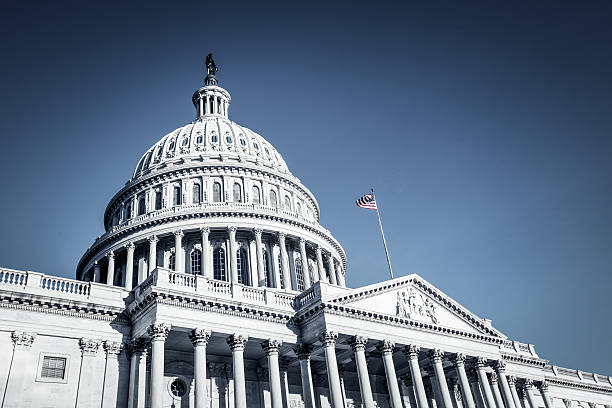The novel coronavirus (COVID-19) crisis has touched so many lives, with both illnesses and hardships. In response to this crisis, our office is working remotely on all accounting and tax projects. The best method to contact us is to email us at [email protected]. We are focused on staying up to date on the tax, accounting and finance updates to assist everyone with these challenges. The final Coronavirus bill that was signed by President Trump on March 27, 2020 is H.R. 748 called the CARES Act. This passed bill was different than the Senate bill I wrote about on March 25, 2020. Some provisions are the same or similar.
Based on new information reviewed and the discussions with our clients, I’m providing an update.
- Section 1102 Paycheck Protection Program Loans (PPL):
- This is a section 7(a) SBA loan
- VA Comment: Supposed to be a streamline process. When I speak with bankers, they advise that they are still waiting for guidance from SBA. See attached the U.S. Chamber of Commerce Coronavirus Emergency Loan Checklist.
- VA Update: look at https://home.treasury.gov/system/files/136/PPP–Fact-Sheet.pdf for information about the PPP loans.
- Apparently, small business can apply starting April 3, 2020. However, banks need to be prepared. Most banks have sent out emails to their customer to begin compiling information regarding payroll, and health care costs.
- Starting April 10, 2020, independent contractors and self-employed individuals can apply.
- We are assuming the banks will want to look at and / or have the net self-employed income from your 2019 tax return or financial statements, and they may ask for 1099’s.
- The Paycheck Protection Program application form can be viewed at https://home.treasury.gov/system/files/136/Paycheck-Protection-Program-Application-3-30-2020-v3.pdf.
- VA Update: Based on additional information received from tax discussions, it seems as if a taxpayer can apply for BOTH a PPL and an EIDL, however, if they apply for both, the EIDL can’t be used for payroll, and the PPL is supposed to be used for payroll.
- Some businesses may need more money than just the PPL, so the EIDL will be required. Loans under $250,000 seems to require less information and no personal guarantee.
- Government guarantees 100% of the loan through December 31, 2020
- Guarantee drops to 75% for loans exceeding $150,000 and
- 85% for loans equal to or less than $150,000.
- VA Comments: The Federal loan guarantee reduces at 12/31/2020, as I would expect that large portions of loans will be forgiven for payroll before 12/31/2020.
- Eligible businesses are small business (500 or less of employees), nonprofit, veteran’s organization or tribal businesses.
- Includes sole-proprietors, independent contractors, and self-employed individuals.
- VA Comment: Seems like most every business has been negatively affected from COVID-19 and if a business has payroll, they will apply for the PPL.
- How to Calculate the Loan Amount / Maximum Loan Amount:
- In summary, average monthly payroll from 2019 multiplied by 2.5.
- Sum of average total monthly payment by the applicant for payroll costs incurred during the 1-year period before the date on which the loan is made.
- VA Comment: The current PPL application, just asks for “payroll costs” and the form doesn’t provide a definition of “payroll costs”, so we are suggesting looking at the summary of the bill that defines “payroll costs”. However, we have seen the banks asking for supporting information about “payroll costs”. These items are:
- 2019 Payroll, including the last 12 months
- 2019 Employees – 1099’s for 2019 employees and independent contractors that would otherwise be an employee of your business (Note: Do NOT include 1099s for services)
- Health care costs. All insurance premiums paid by the business owner under a group health plan.
- Retirement – your company retirement plan funding paid by the company.
- Some banks, like Bank of America, have stated that they are currently only going to provide PPL’s for customers that have deposit and lending relationships.
- Payroll Costs as defined in the bill.
- Payroll Costs Included:
- Salary, wage, commission, or similar compensation (not to exceed $100,000. So, if an employee earns $150,000 a year, the company can only use $100,000 a year for the calculation.)
- Payment of cash tip or equivalent
- Payroll Costs Included:
- Payment for vacation, parental family, medical or sick leave
- Allowance for dismissal or separation
- Payment required for the provision of group health care benefits including insurance premiums.
- Payment of any retirement benefits; or
- Payment of State or local tax assessed on the compensation of employees and
- Payroll can’t exceed more than $100,000 a year.
- Self-employed , Sole Proprietor.
- The sum of payments of any compensation to or income of a sole proprietor or independent contractor that is wage, commission, income, net earnings from self-employment that isn’t more then $100,000.
- VA Comments: If you’re self-employed and you pay yourself with draws, then the banks will probably want to see 2019 1099-MISC and various expenses from your business. If you have employees, then you would calculate as discussed above.
- Excluded Payroll Costs:
- An annual salary over $100,000 / year.
- Payroll taxes
- If a seasonal employer, there is an alternative calculation for an average 12-week period from February 15, 2019 and ending June 30, 2019.
- Multiplied by 2.5. NOT to Exceed $10MM
- VA Example: If average monthly payroll was $100,000, then multiple by 2.5 = $250,000.
- If the business was not in business from February 15, 2019 to June 30, 2019, there is another calculation.
- VA Comment: This loan calculation isn’t as rich as the senate proposed bill which was multiplied by 4. Also, the loan doesn’t seem to include payroll taxes for the employee or employer, so the loan seems to be just the net payroll. Not sure this will be a large enough loan for some small business.
- Waives affiliation rules for businesses in hospitality and restaurant industries franchise.
- VA Comment: This means that restaurant chains that have over 500 employees can treat each location has an individual borrow and they don’t need to consolidate.
- Defines covered loan period as beginning on February 15, 2020 and ending on June 30, 2020.
- Established the maximum 7(a) loan amount to $10MM through December 31, 2020 and provides a formula by which the loan amount is tied to payroll costs incurred by the business to determine the size of the loan.
- Allowable use of the loan includes payroll support, such as employee salaries, paid sick or medical leave, insurance premiums, and mortgage, rent, and utility payments.
- Provides delegated authority which is the ability for lenders to make determination on borrowers eligibility and creditworthiness without going through all SBA’s channels to all current 7(a) lenders who make these loans to small business and provides the same authority to lenders who join the program and make these loans.
- Requires eligible borrowers to make a good faith certification that the loan is necessary due to the uncertainty of current economic conditions caused by COVID -19; they will use the funds to retain workers and maintain payroll. Lease and utility payments; and are not receiving duplicate funds for the same uses from another SBA program.
- Waives both borrower and lender fees for participation in the Paycheck Protection Program (PPP).
- Waives the credit elsewhere test for funds provided under this program.
- Waives collateral and personal guarantee requirements under this program.
- Any portion of the loan Not used for forgiveness purposes, the remaining loan balance will have a maturity of not more than 10 years, and the guarantee for that portion of the loan will remain intact.
- Maximum interest rate will be 4%.
- No prepayment fees.
- Allows complete deferment of 7(a) loan payments for at least six months and no more than a year.
- Increases SBA Express loan from $350,000 to $1MM through December 31, 2020.
- If head count reduces 25% or more, it will hurt the loan forgiveness, or make the loan not forgiven at all.
- Section 1106 Loan Forgiveness:
- Borrower shall be eligible for loan forgiveness equal to the amount spent by borrower during an 8 week period after the origination date of the loan on payroll costs, interest payment on any mortgage incurred prior to February 15, 2020, payment of rent on any lease in force prior to February 15, 2020, and payment on any utility for which service began before February 15, 2020.
- The loan forgiveness seems to be only for PPL / PPP loans.
- Amount forgiven may not exceed the principal amount of the loan.
- Eligible payroll costs do not include compensation above $100,000 in wages.
- The amount forgiven will be reduced proportionally by any reduction in employees retained compared to the prior year and reduced by the reduction in pay of any employee beyond 25% of their prior year compensation.
- Loan forgiveness / cancellation will not be included in borrower’s taxable income.
- VA Update: We are reading that Treasury is now stating that 75% or more of the loan forgiveness needs to be for payroll. Thus, no more than 25% of the loan forgiveness can be for non-payroll.
- Section 1110 Emergency EIDL (Economic Injury Disaster Loan) Grant:
- Allocated $10B in funding for EIDL.
- Provides an advance of $10,000 to small business and non-profits that apply for SBA EIDL loans within three days of applying for the loan.
- Expands eligibility for access to EIDL’s to include tribal business, cooperatives and ESOP’s with fewer than 500 employees or any individual operating as a sole proprietor or independent contractor during the covered period (January 31, 2020 to December 31, 2020. Private non-profits are also eligible for both grants and EIDL’s.
- EIDL’s are loans up to $2MM that carry interest rates up to 3.75% for companies and up to 2.75% for nonprofits as well as principal and interest deferment up to 4 years.
- The loans may be used for expenses that could have been met had the disaster not occurred, including payroll and other operating expenses.
- The EIDL grant does not need to be repaid, even if the grantee is subsequently denied an EIDL.
- It may be used to provide paid sick leave to employees, maintain payroll, meet increased production costs due to supply chain disruption or pay business obligations, including debts, rent and mortgage payments.
- VA Update: If a business needs more money than they can get from the PPL, then they can apply for an EIDL for items other than payroll which the PPL would be used for.
- Eligible grant recipients must have been in operation on January 31, 2020.
- The business that received an EIDL between January 31, 2020 and June 30, 2020 as a result of COVID-19 disaster declaration, is eligible to apply for a PPP loan, or the business may refinance their EIDL into a PPP loan.
- Typically, the $10,000 grant would be subtracted from the amount forgiven in the payroll protection plan.
- Waived personal guarantee on advances and loans not exceeding $200,000.
- The approval should be based on solely on the credit score of the applicant and no requirement for tax returns or tax return transcripts.
- VA Update: For loans over $250,000, there seems to be more underwriting requirements. May require financial statements, and tax returns. However, we haven’t heard or seen if these rules are being applied.
Most of the financial assistance offered through the first bill called, HR 6201, FAMILIES FIRST CORONRAVIRUS RESPONSE ACT (discussed on our previous memo), and the CARES Act S. 3548 which concluded as HR 748 was included in my discussion below.
The tax and financial laws are changing daily, therefore I marked this memo with “V4” (version 4) on my memo above. There are various other social service updates, but our memos will focus mainly on finance, business and tax updates.
- Highlights of the PROPOSED SENATE BILL S 3548, CORONAVIRUS AID, RELIEF AND ECONOMIC SECURITY ACT OR THE CARES ACT. March 19, 2020. This bill has NOT been passed in the Senate at this time, so it can change, and then the bill would need to go to the House and to the President. You can view the at https://www.congress.gov, search for HR 748.
- Businesses & Other Employers:
- Retention payroll tax credit for eligible employers that continue to pay employee wages while their operations are fully or partially suspended as a result of certain COVID-19 related government orders. A 50% refundable payroll tax credit on wages paid up to $10,000 during the crisis. The credit is available for employees retained by not currently working due to the crises for firms with more than 100 employees and for all employee wages for firms with 100 or fewer employees.
- Businesses & Other Employers:
- Delayed Employer-side Social Security payroll tax payments may be delayed until January 1, 2021 with 50% owned on December 31, 2021 and the other half due on December 31, 2022. Deferral of employer portion of payments for certain payroll taxes.
- Net Operating Losses: Modification of net operating loss (NOL) and limitation rules. Will allow most NOL’s incurred in 2018, 2019, and 2020 to carry them back for refunds to 5 years. This carry back law was exempt for tax years beginning 2018 under the TCJA, but the CARE Act reverses it. Due to this financial crisis they are allowing NOL carry backs for these periods to be carried back. The Act also removed the 80% utilization of NOL’s for a carry forward, meaning an NOL could only reduce taxable income by 80%.
- Business Interest Deduction: Modification of the deduction limitation on business interest rules of IRC section 163(j). The law temporarily changes the business interest deduction limit from 30% to 50% for tax years 2019 and 2020.
- Qualified improvement property technical correction, allowing qualifying interior improvements of buildings to be immediately expensed (bonus depreciation or Section 179) rather than depreciated over 15 years for 2018 and future.
- Payroll tax credit for eligible employers up to 50% refundable payroll tax credit on wages paid up to $10,000 during the crisis. The credit would be available to employers whose business were disrupted and retained employees, but they were not able to work. Employers with more than 100 employees and under 100 employees have slightly different calculations.
- Business Loss Limitation Revision: For years after 12/31/2017, the business loss limitation is suspended. Previously, business losses couldn’t be used to offset non-business income (like wages, investment income) over $250,000 for individuals or $500,000 for married filing jointly.
- VA Comments: For individuals that have business losses, and perhaps real estate losses from being a real estate professional, this law change may make it desirable to amend the 2018 tax return.
- Individuals:
- Recovery rebates of up to $1,200 for single and $2,400 for married couples filing jointly, plus $500 per qualifying child. Phaseouts of the rebates are based on adjusted gross income (AGI) starting at $75k for single, and $150k for married couples.
- The rebates phase out at $99,999 for single and $199,000.
- Expansion of unemployment benefits, including self-employed, and gig-economy workers. Unemployment insurance to include an additional $600 / week for an additional 13 weeks.
- Waiver of the 10% penalty for COVID-19 related early distributions from IRAs, 401K and other retirement plans. However, taxability of the distribution will need to be considered.
- Exclusion of certain employer payments of student loans up to $5,250 will not be treated as taxable income to the employee.
- Temporary Relief Federal Student Loan: Deferral of student loan payments on principal and interest for 6 months through September 30, 2020.
- Recovery rebates of up to $1,200 for single and $2,400 for married couples filing jointly, plus $500 per qualifying child. Phaseouts of the rebates are based on adjusted gross income (AGI) starting at $75k for single, and $150k for married couples.
- Other Items:
- Forbearance of Residential Mortgage Loan Payments (section 4023): Provides up to 90 days of forbearance for multifamily borrowers with a federally backed multifamily mortgage loan who have experienced a financial hardship. Borrowers receiving forbearance may not evict or charge late fees to tenants for the duration of the forbearance period.
- Applicable mortgages include loans to real property designed for 5 or more families that are purchased, insured, or assisted by Fannie Mae, Freddie Mac, or HUD.
- Forbearance of Residential Mortgage Loan Payments (section 4023): Provides up to 90 days of forbearance for multifamily borrowers with a federally backed multifamily mortgage loan who have experienced a financial hardship. Borrowers receiving forbearance may not evict or charge late fees to tenants for the duration of the forbearance period.
- Additional Information regarding HR 748 CARES ACT ,
- Relief for Individuals, Families, and Businesses. Rebates and Other individual Provisions.
- Eligible individuals shall be allowed as credit against the tax for the first taxable year beginning in 2020 an amount equal to the lesser of:
- Net income tax liability, or
- $1,200 ($2,400 in the case of joint returns)
- The credit should not be less than $600
- $500 per qualifying children
- Eligible individuals are based on adjusted gross income (AGI) of
- $75,000 and $150,000 in the case of a joint return. Once a taxpayer AGI is either $75k or $150k the credit begins to be reduced and phased out. The phase out is $99k and $198k.
- Delay in filing deadlines. In the case for returns for tax year 2019, due dates for April 15, 2020, are delayed to July 15, 2020. This isn’t in the HR 748 bill, but it is noted in IRS Notice 2020-18. An extension is not required. There is an automatic extension till July 15, 2020. However, if the tax return can’t be filed by July 15, 2020, an extension will need to be filed.
- This means that IRA, HAS and MSA contributions are extended to July 15, 2020 also.
- Individual ES Payments: Different from the Senate bill, 1st quarter estimated tax payments are delayed and due on July 15, 2020. 2nd quarter estimated tax payments are still due on June 15, 2020. This is stated on IRS Notice 2020-18 and Notice 2020-20.
- You can read about these due date extensions at:
- Eligible individuals shall be allowed as credit against the tax for the first taxable year beginning in 2020 an amount equal to the lesser of:
- Relief for Individuals, Families, and Businesses. Rebates and Other individual Provisions.
https://www.irs.gov/newsroom/filing-and-payment-deadlines-questions-and-answers
- Retirement Accounts: Early withdrawal penalties under IRC section 72(t) which is typically 10% for Federal and then some states add a lower penalty are waived if the early distributions are $100,000 or under.
- Amounts distributed may be paid back. There is also a provision that allows taxpayers that took early distributions to make one or more contributions over a three-year period to contribute up to the amount of distributions they took.
- Income inclusion of premature distribution. A taxpayer can spread the taxability of the premature distribution over 3 years.
- Loans from retirement plans: The bill allows for an increase in loans and not to be treated as distributions. The loan amount is increased from $50,000 to $100,000.
- Loan repayments will be delayed by 1 year.
- Charitable Contributions: The allowance to deduct more charitable donations have been increased for both individuals and Corporations.
- VA Comments: Seems as if the individual 30% / 50% AGI limitation is temporary suspended. The 10% limitation for C Corporations seem to be increased to 25%.
- Student Loan Temporary Relief: The bill states the Secretary shall suspend all payments due for loans under part D of title IV for Higher Education Act of 1965 for 3 months.
- Business Provisions:
- C Corporation estimated tax payments. Delay of estimated tax payments for Corporations. Like individuals, the required estimated tax payments for C Corporation is delayed till July 15, 2020.
- Delay in Payment of Employer Payroll Taxes. The bill states that employers can delay payment of the employer portion of payroll taxes till December 31, 2021 for 50% of the deferral and the balance due on December 31, 2022. This also applies to the estimated payroll deposits.
- VA Comment: If a small business is going to request and receive a loan for payroll and overhead, this deferral might not be necessary. If a defer is desired, a liability should be posted on the companies’ financial statements.
- Net Operating Loss (NOL) Carrybacks: The NOL carry back was removed for tax years after 12/31/2017. This bill will allow NOL’s generated from year 2018, 2019, and 2020 to carry back and request a refund for up to a 5 year carry back period. The 80% limitation is removed also.
- VA Comment: If you incurred a loss in 2018 or 2019, or expect a loss in 2020, please get us the information and quickly as possible so we can begin preparation of a NOL carryback. If your tax return had qualified improvement property and the return couldn’t take the deduction, this new bill corrects that prior error and that deduction might generate a taxable loss for a NOL carryback.
- A taxpayer may elect out of the 5-year NOL carry back. If elected, it can’t be changed. It is irrevocable.
- VA Comment: For tax returns with NOL’s for 2018 or 2019 that have been filed, the return needs to be amended within 120 days from the enactment of this bill regarding the NOL carryback provision.
- Loss limitation for taxpayers other than Corporations: IRC section 461(l)(2) was added by the Tax Cuts and Jobs Act of 2017 and was effective for tax years 2018 to 2025 which disallowed any excess business loss for a non-corporate taxpayer. Generally, the law prohibited business losses to only be deducted against no more than $250,000 / $500,000 of non-business income. Any non-deductible business loss was carried forward. The bill removes those limits from being implemented till December 31, 2020 (previously applied on December 31, 2017).
- VA Comment: We know this loss limitation occurred with some of our clients, and we will have to review affected taxpayers to ask them if they want us to amend their tax returns. The IRS will need to provide guidance on the amendment process.
- Interest Deduction Limitation: The Tax Cuts and Jobs Act of 2017 enacted an interest deduction limitation. For taxpayers where it was applicable, taxpayers with gross sales over $25MM, the interest deduction was limited to 30% of the adjusted taxable income. The bill now increases the limitation amount for 30% to 50% for tax years 2019 and 2020.
- VA Comment: This means a taxpayer that this limitation would apply to will be allowed more of an interest deduction.
- Technical correction for qualified Improvement Property: This bill corrected a prior law error.
- The Tax Cuts & Job Act (TCJA) removed investment barriers by allowing businesses to immediately deduct the cost of certain investments under a provision called 100% bonus depreciation.
- Due to legislative oversight, the law accidentally excluded improvements property to be eligible from 100% bonus depreciation.
- This bill corrects this error and thus the improvements would be eligible for bonus depreciation and should make this asset a 15-year recovery period.
- Foreign controlled corporation/shareholder:
- The bill is changing the US owned foreign corporation from 10% to 50%.
- Limitation of Paid Leave: Section 110(b)(2)(B) of the Family and Medical Leave Act of 1993 is providing limitation. An employer shall not be required to pay more than $200 per day and a $10,000 in aggregate for each employee for paid leave under this section.
- Other Considerations:
- Lost Income/ Business Interruption insurance coverage: Our firm and clients have reviewed our insurance policies, and considered filing a claim for lost income or additional expense base on “Civil Authority”, in which the argument is that since the state government demanded the residents to stay at home, there has been some business interruption. In conversations with insurance brokers that the coverage is excluded for a “virus”. However, the argument is that the company didn’t close their business for a virus, as they probably didn’t close during influenza season, they closed because of the state government made a demand. As one can guess, lawsuits are already starting, so we are receiving information that if a business has lost of income or business interruption coverage, review your policy and consider filing a claim.
- You can review a lawsuit regarding this at https://www.insurancejournal.com/news/national/2020/03/19/561638.htm
Please read our earlier memos dated March 17, 2020, March 25, 2020, and March 30, 2020, which were Versions 1 through 3. If you can’t find it, please contact us at [email protected] to request a copy or you can read it on our website at www.verticaladvisors.com under blogs.
Action Items:
- Get your information ready for a loan if you need it. We are expecting PPL loans to be processed quicker than other SBA loans. However, we don’t know yet. See the US Chamber of Commerce publication at https://www.google.com/search?q=us+chamber+of+commerce+coronavirus+emergency+loans&oq=us+chamber+of+&aqs=chrome.5.0l2j69i59j69i57j0l3j69i60.11468j0j4&sourceid=chrome&ie=UTF-8
- Keep sending us your tax information, as we still need to prepare all the returns before the 9/15/2020 and 10/15/2020 due dates.
- April 15, 2020 due dates have been delayed to July 15, 2020. If you need more time after that, and extension will need to be filed.
- 2019 taxes are due July 15, 2020, and 1st quarter estimated tax payments are due July 15, 2020. 2nd quarter ES payments are still due June 15, 2020.
- Consider amending 2018 and/or 2019 tax returns for the following:
- NOL’s: Now NOL’s from 2018 – 2020 can be carried back up to 5 years.
- VA Comment: The election to file a NOL for a 2018 and / or a tax return already filed much be by the extended due date of the 2019 tax return. So, if a 2018 tax return needs to be filed to benefit from the 2018 NOL, that return needs to be prepared and filed before the 2019 tax return if filed.
- Interest deduction limitations
- Business loss limitations
- NOL’s: Now NOL’s from 2018 – 2020 can be carried back up to 5 years.
Lastly, and as always, please contact us if you need assistance or have any questions. Contact us at [email protected]























